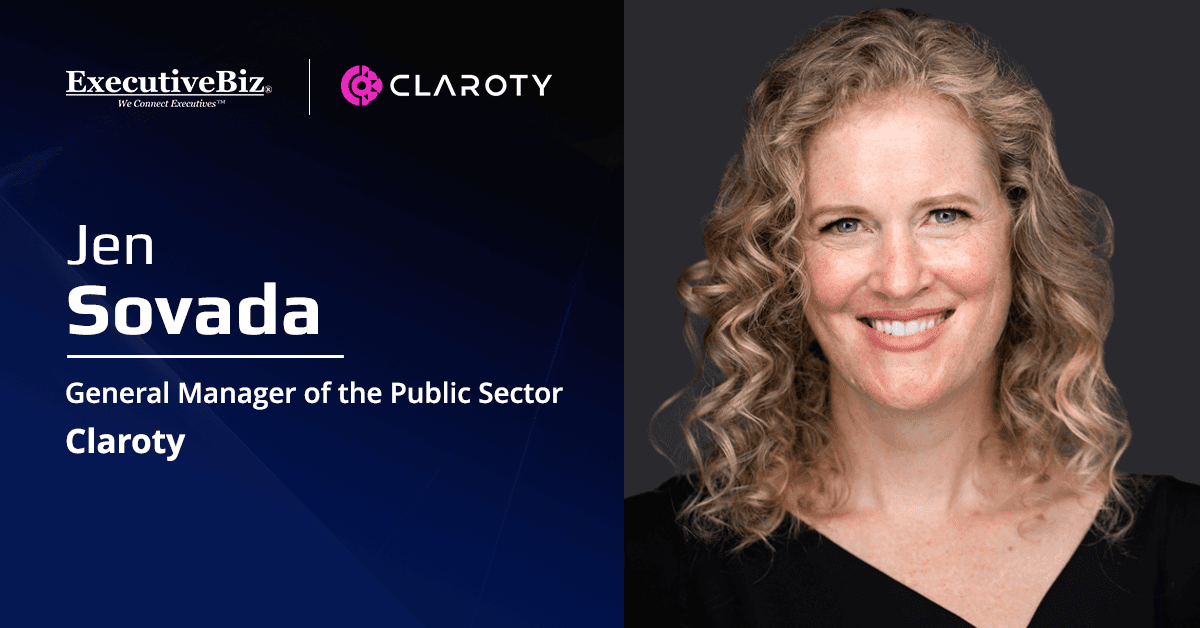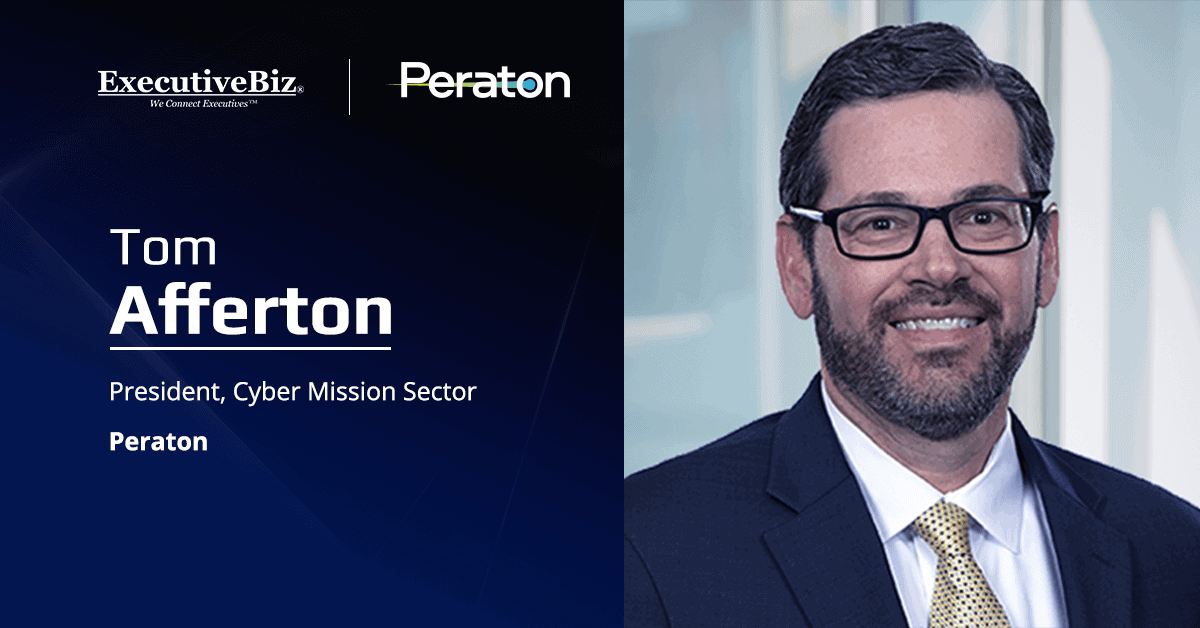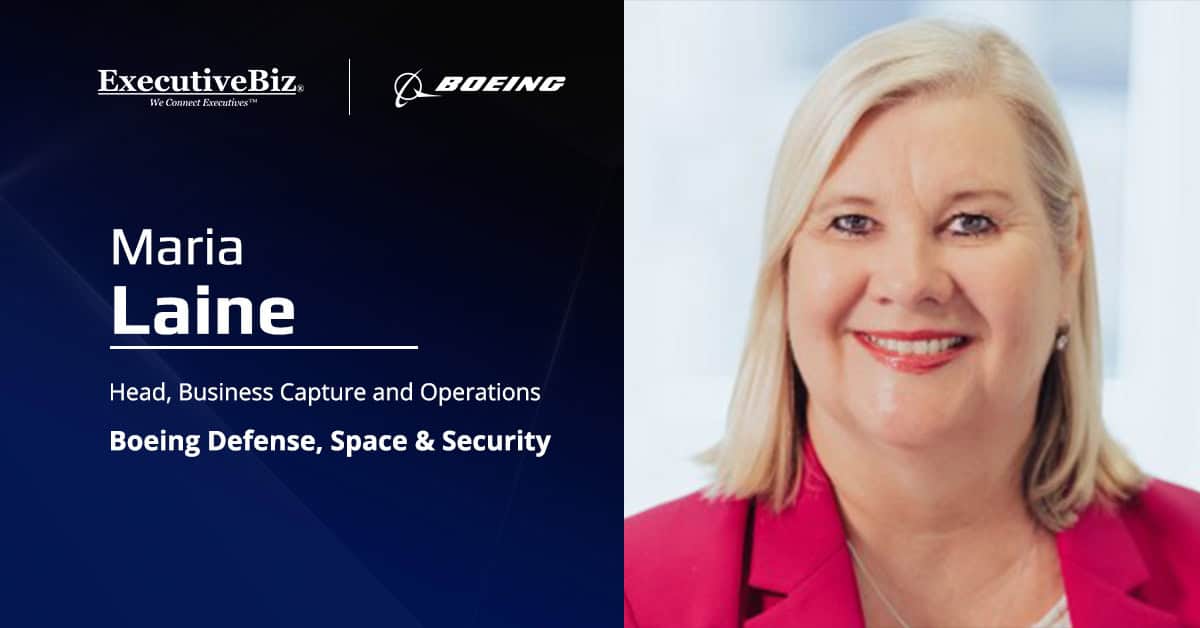Jen Sovada’s 25 years in the Air Force taught her immensely valuable skills. Among them, it taught Sovada, a retired colonel and intelligence officer, the essential qualities for success in GovCon: building trust, investing in people’s growth and creating shared purpose.
Sovada, as general manager for public sector at Claroty, is applying those skills while leading sales and strategy for the company’s federal government and state, local and education teams. Sovada is leveraging her extensive expertise in intelligence, national security and technology to advance Claroty’s platform to support unique public sector initiatives.
In addition to her Claroty work, Sovada is a Georgetown University associate professor in quantum information sciences and national security. She’s also on the National Security Institute Cyber and Tech Center’s, or NSI CTC, Tech Leaders and Innovation Council.
Having joined Claroty in April, we last spoke with Sovada about 18 months ago for a Spotlight interview when she was global public sector president at SandboxAQ. Sovada recently sat down with ExecutiveBiz for her latest Spotlight interview, where she discussed how cybersecurity has fundamentally shaped national security, the biggest challenges facing U.S. homeland security and how Claroty sets itself apart from competitors in the bid process.
Get the latest details on how AI is revolutionizing homeland security at the Potomac Officers Club’s 2025 Homeland Security Summit on Nov. 12! Hear directly from top-ranking federal and industry professionals at the “Operationalizing the AI Action Plan in Homeland Security” panel discussion. Sign up today for this prestigious GovCon conference and boost your homeland security revenues in FY 2026!
ExecutiveBiz: What would a public-private partnership leveraging cybersecurity to protect critical U.S. infrastructure such as city water systems look like?
Jen Sovada: A robust public-private partnership to protect critical infrastructure starts with the recognition that neither government, nor private industry, can defend the nation alone. The private sector owns and operates the vast majority of U.S. critical infrastructure, including water treatment plants, power grids, transportation networks and healthcare systems. Federal agencies, such as the Cybersecurity and Infrastructure Security Agency and the Department of War, have unique visibility into threat actors, intelligence collection capabilities and frameworks for best practices. A successful partnership hinges on trust, transparency and consistent, bi-directional communication between these two realms.
In practice, this could mean federal agencies sharing actionable intelligence in real time, providing technical guidance on operational technology, or OT, network vulnerabilities and offering field support when significant threats emerge. The private sector, in turn, would provide critical feedback on operational realities, identify gaps in security controls and participate in joint exercises and tabletop scenarios to test readiness.
For a city water system, this might involve continuous monitoring of OT networks that control pumps, valves and treatment operations, coupled with guided implementation of zero trust principles and segmentation practices. Agencies would assist with threat modeling, incident response planning and compliance with federal standards, while operators ensure they address real-world operational constraints.
The goal is not simply regulatory compliance but the creation of a resilient ecosystem where intelligence flows quickly, vulnerabilities are mitigated proactively and both sides can act before a threat escalates. Joint planning and shared visibility are essential to ensuring that smaller municipalities, or resource-constrained utilities, are not left exposed. Without this foundation, intelligence can be delayed, misinterpreted or lost, leaving operators unable to respond effectively to attacks that could disrupt public safety.
EBiz: Can you talk about how cybersecurity has impacted or changed the national security paradigm? What new trends or shifts are you seeing at the intersection of cybersecurity and national security, and how are those trends influencing the public sector today?
Sovada: Cybersecurity has fundamentally reshaped the national security landscape. In today’s world, threats are no longer confined to espionage or IT networks. They can directly impact public safety, critical infrastructure and the integrity of supply chains. Nation-state actors and sophisticated criminal groups are increasingly targeting OT systems, which control water treatment facilities, power grids, transportation networks and public health operations. Attacks like Volt Typhoon and Salt Typhoon illustrate the scale and persistence of these threats, often allowing adversaries access to infrastructure systems for extended periods without detection.
Two major trends are influencing the public sector today. One is the convergence of IT and OT networks. Government agencies are recognizing that OT environments are as critical as traditional IT networks and require the same level of monitoring, policy enforcement and threat mitigation. Yet these environments are often older, siloed, or unmonitored, creating significant visibility gaps that sophisticated adversaries can exploit and require different cybersecurity technology to ensure their protection.
The second is the rise of zero trust frameworks in federal cybersecurity policy. Initiatives like the Department of War’s OT zero trust strategy emphasize the need to operate under the assumption that breaches will occur, to enforce least privilege and to maintain continuous verification of users and systems. These trends demand a shift in mindset across the public sector.
Agencies must prioritize operational readiness, secure system architecture and strong public-private collaboration. It’s no longer sufficient to focus on compliance alone; the stakes now involve mission-critical functions, the safety of communities and the ability to maintain national resilience in the face of evolving threats. As adversaries become more sophisticated, the integration of real-time intelligence, proactive risk assessments and cross-sector collaboration becomes a central pillar of national security strategy.
Are you a GovCon technology professional with a homeland security portfolio? Then you can’t afford to miss the Potomac Officers Club’s 2025 Homeland Security Summit on Nov. 12! Discover new business opportunities at the “AI in Action: Driving Efficiencies at the Border” panel discussion. Check out the latest offerings from leading sponsors LMI, Red Hat and others. Secure your seat today!
EBiz: Can you give us an overview of the U.S.’ current homeland security efforts? From your perspective, what are our highest priorities and the biggest challenges we’re facing?
Sovada: The U.S. homeland security landscape is focused on protecting citizens, infrastructure and essential services from a rapidly evolving spectrum of physical, AI and cyber threats. Current efforts span federal, state and local agencies. Priorities are centered on securing critical infrastructure, modernizing IT and OT networks, and strengthening the coordination required to respond to incidents at scale.
Securing infrastructure is paramount, particularly in sectors such as energy, water, transportation and public health, where operational disruptions can have cascading impacts on communities and national readiness. Federal agencies like CISA serve as a critical hub, providing threat intelligence, vulnerability assessments and technical guidance, often filling the gaps for smaller operators who lack internal cybersecurity expertise.
However, resource limitations present significant challenges. Recent budgetary pressures and workforce reductions have strained federal agencies’ ability to maintain field operations, coordinate effectively with private partners and conduct proactive outreach to state and local jurisdictions. Fragmentation remains another key challenge: the U.S. has numerous independent systems and operators, which can create blind spots if coordination fails.
At the same time, sophisticated adversaries are conducting increasingly complex campaigns that exploit these gaps. From my perspective, the highest priorities must be securing OT systems, building and maintaining public-private partnerships that enable rapid intelligence-sharing and investing in the workforce and tools capable of addressing evolving threats.
Strengthening resilience requires a national strategy that balances federal oversight with local operational realities, ensuring that even under-resourced jurisdictions are prepared to act when threats arise. Without such coordination, vulnerabilities in one region can propagate risks across the broader system.
EBiz: What’s something you learned from your Air Force career that you apply in your day-to-day work?
Sovada: One of the most valuable lessons I learned from my Air Force career was the power of a “mission-first” mentality combined with people-centered leadership—and this principle drives everything I do at Claroty. I learned that you can’t accomplish complex missions without building trust, investing in people’s growth and creating shared purpose. This isn’t just about managing personnel—it is about understanding that innovation and mission success happen when people feel valued, challenged and connected to something bigger than themselves.
My Air Force experience has been equally valuable for public sector business development, teaching me that government customers don’t just buy technology—they buy trust and mission alignment. Having been on the government side, I understand the pressures federal agencies face, their compliance requirements and their operational and budget constraints. When I engage with potential customers, I’m not just selling Claroty’s capabilities. I’m demonstrating how we understand their mission and can be a reliable partner in protecting national security interests.
Regarding innovation, the Air Force showed me that breakthrough solutions come from combining operational urgency with strategic patience. In intelligence work, you need to solve immediate problems while building capabilities for future threats you can’t yet fully see. At Claroty, I apply this by encouraging teams to innovate with both current customer needs and emerging threat landscapes in mind.
We’re not just responding to today’s OT security challenges. We’re anticipating how adversaries might evolve, ensuring our solutions stay ahead of the curve. The military’s emphasis on mission success through people development continues to guide how I approach leadership, client relationships and innovation at Claroty.
EBiz: What do you think is the most overlooked part of the bid process, and how does Claroty set itself apart from its competitors in this area?
Sovada: One of the most overlooked aspects of the bid process is the operational and relational context behind the technical requirements. Many organizations focus narrowly on technical specifications, compliance checklists or price without fully considering the real-world operational environment in which their solution will be deployed. Agencies want partners who understand mission impact, workflow integration and the long-term sustainability of the solution, not just whether it meets a specification on paper.
Claroty differentiates itself by combining deep technical expertise with practical insight into both IT and OT environments. We take the time to understand the agency’s operational context, anticipate future needs and design solutions that are actionable, scalable and resilient. Our approach emphasizes continuous threat monitoring, proactive intelligence sharing and integration with federal frameworks like FedRAMP and zero trust strategies. We also focus on building relationships and trust with stakeholders at all levels, from operational teams to executive leadership, ensuring that the implementation of our solutions is smooth and effective.
By aligning technical capability with operational understanding and fostering ongoing collaboration, Claroty ensures that agencies are not only meeting immediate cybersecurity requirements, but are also positioned to adapt to the rapidly evolving threat landscape. This combination of technical rigor, operational awareness and relational trust is what sets us apart and allows our solutions to provide long-term, mission-critical value.






